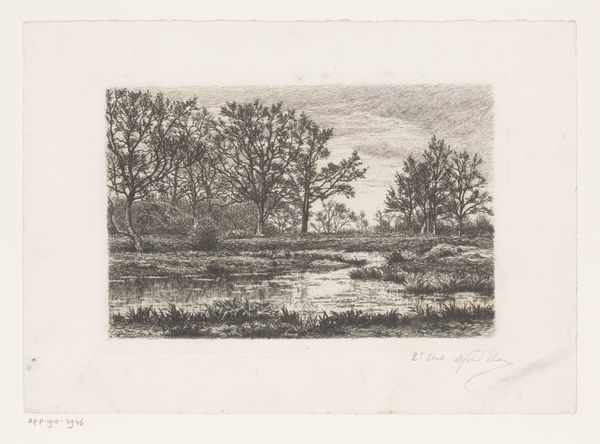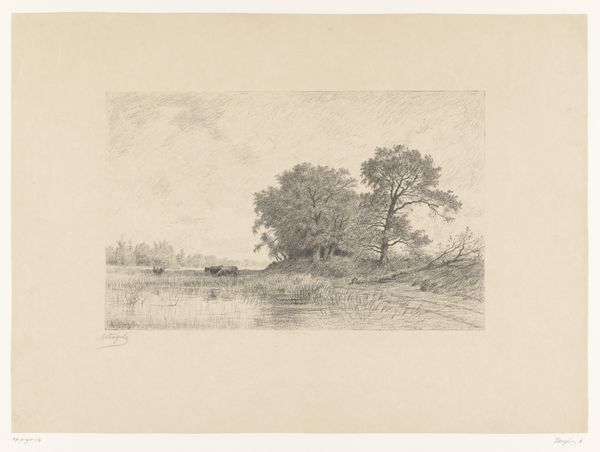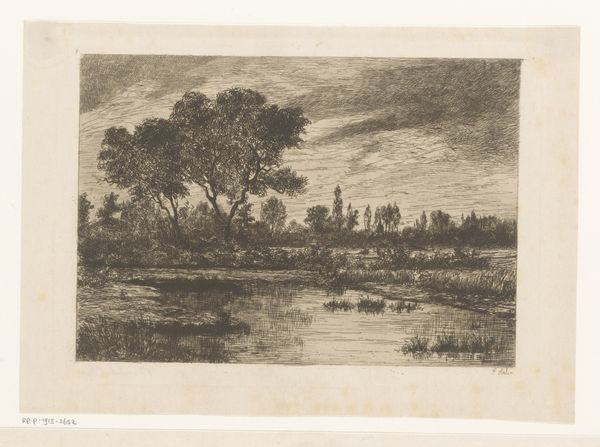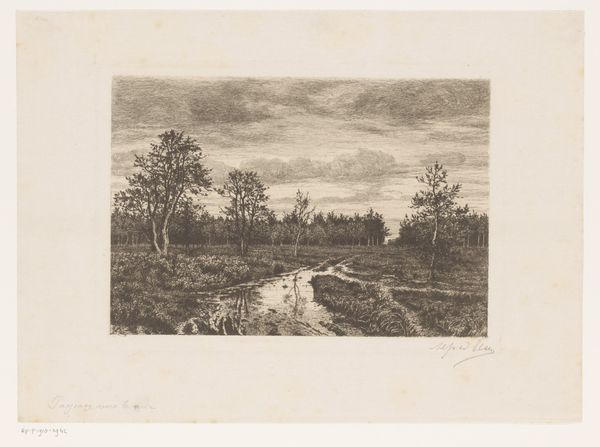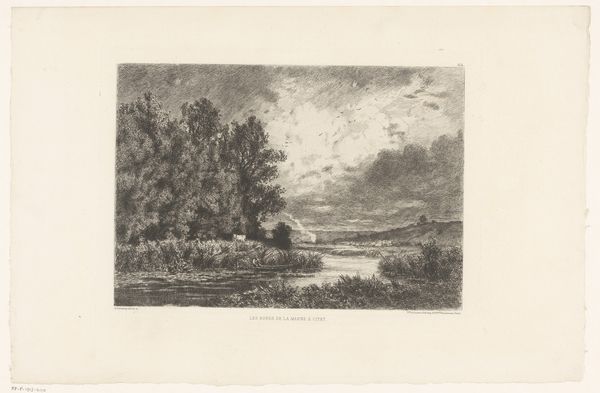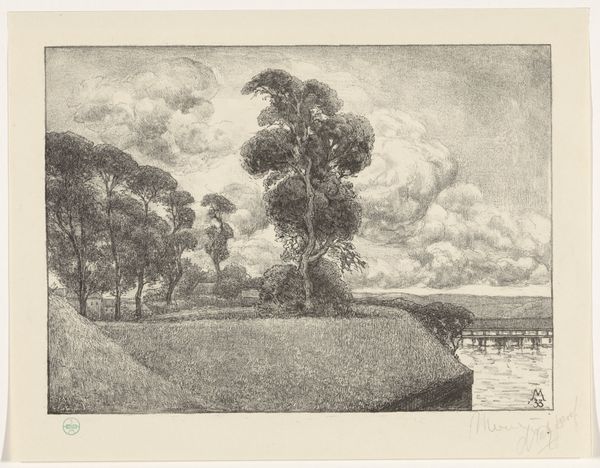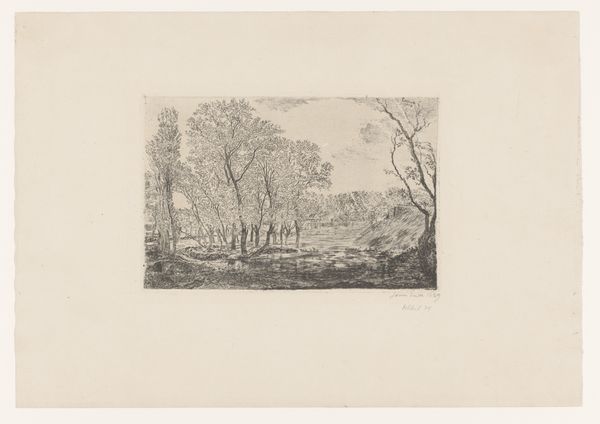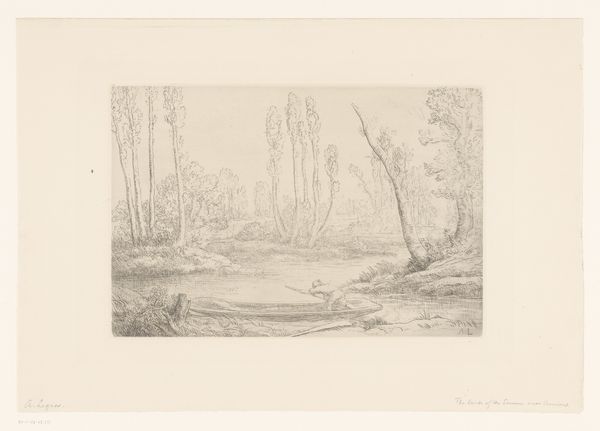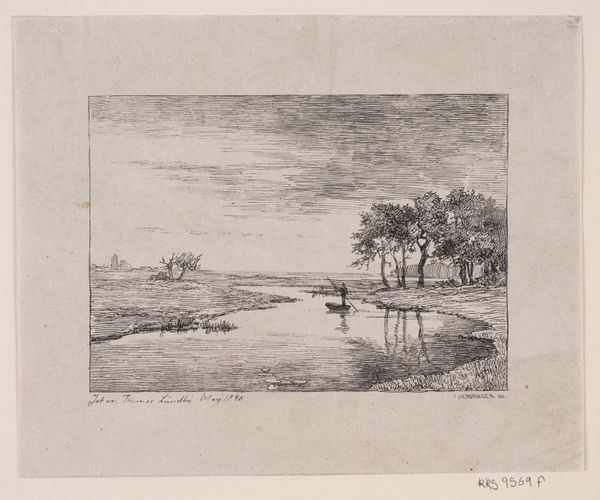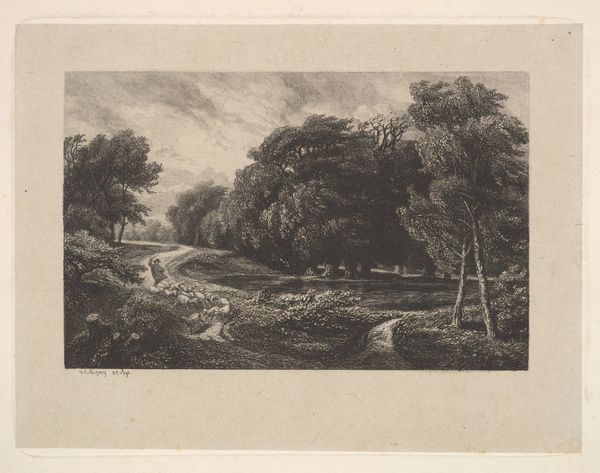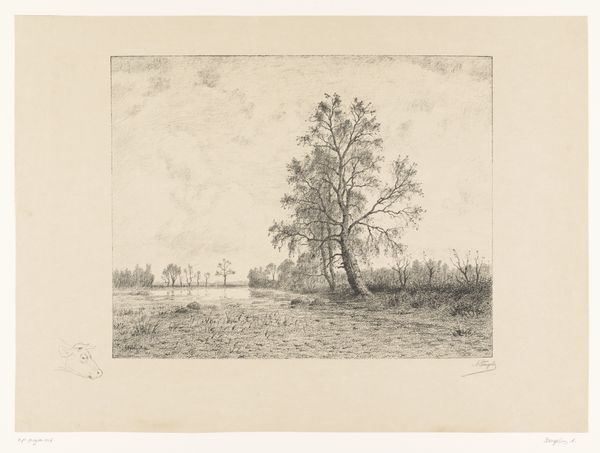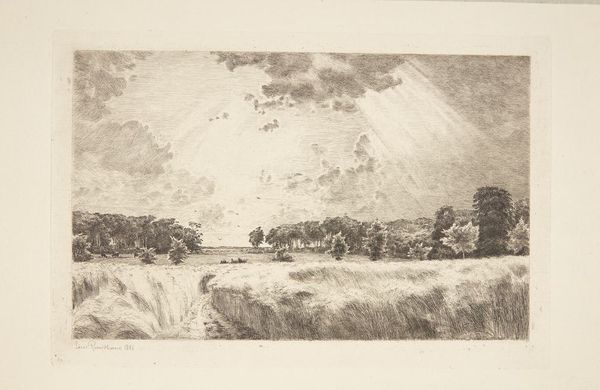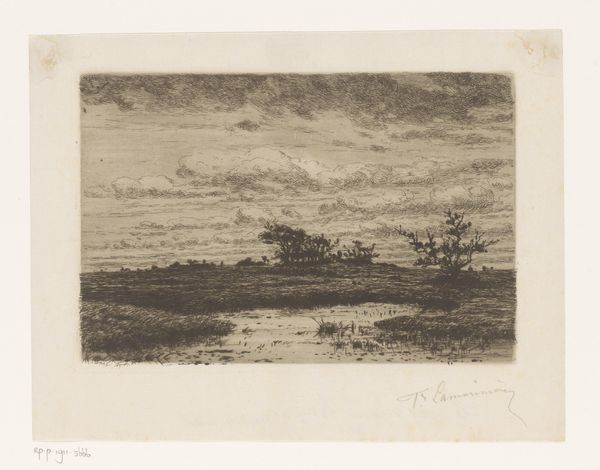
Dimensions: 430 × 565 mm
Copyright: Public Domain
Editor: This is Thomas Moran’s "Long Island Landscape," an etching from 1889 currently residing at The Art Institute of Chicago. It's very evocative; it reminds me of childhood summers. What strikes you when you look at it? Curator: The scene, rendered through the sharp, decisive lines of etching, presents an almost idealized vision of nature. Consider the overarching symbol of the tree line—its visual weight anchoring the composition. What could it signify about humanity's relationship to nature? Editor: Protection? The edge of a cultivated space? There's someone walking toward the trees... Curator: Precisely. Note how Moran frames that human figure. Small against the immensity of the landscape, the person seems drawn into the darker, forested depths. It evokes a yearning, perhaps, or a sense of inevitable merging with the wild. What emotions does that provoke in you? Editor: I think it does evoke longing. The landscape seems both inviting and slightly menacing. Curator: It speaks to the enduring ambivalence of the American spirit – a constant push and pull between taming the wilderness and being swallowed by it. It reflects, too, the broader Romantic sensibility, the individual soul confronted by the sublime force of nature. Do you think that Moran sought to offer a sense of nostalgia? Editor: Possibly. There’s a serenity but also a hint of something lost or fleeting in that very feeling. It definitely makes you consider how people related to nature then compared to now. Curator: Indeed. The artwork becomes a lens through which we examine our evolving relationship with the natural world. What starts as a landscape ends as cultural memory. Editor: That’s really insightful. I hadn't thought of it that way.
Comments
No comments
Be the first to comment and join the conversation on the ultimate creative platform.
